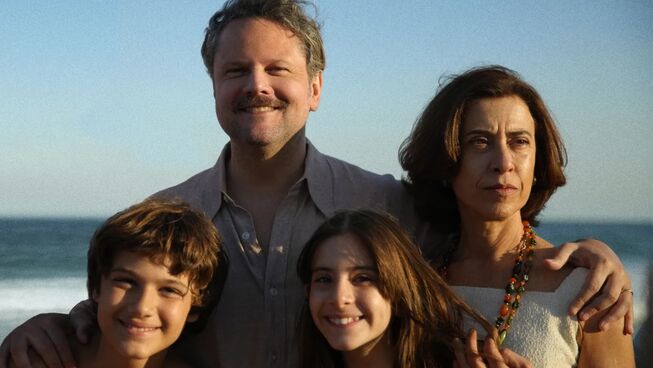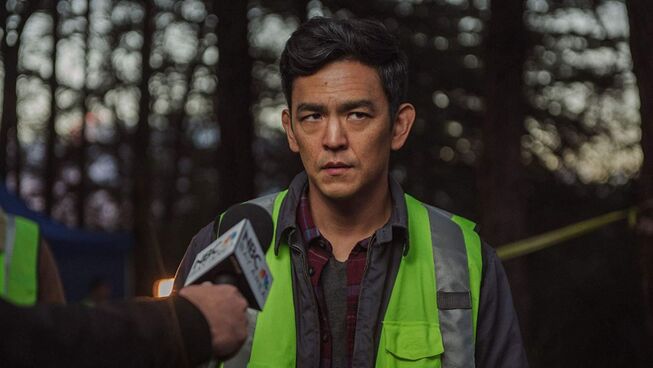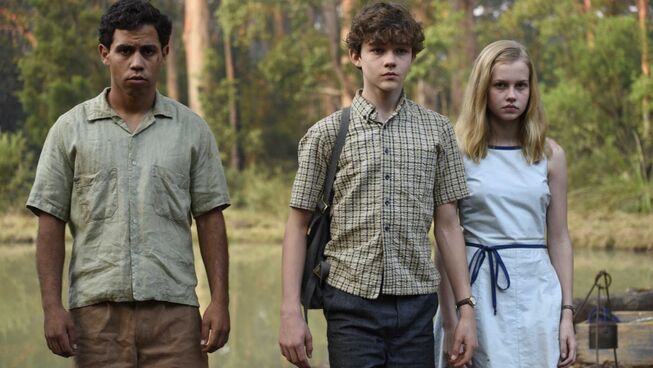I'm Still Here

⭐️ ⭐️ ⭐️ ⭐️ 1/2(out of 5 stars)
One of the beautiful aspects of the film industry’s awards season is how pictures that would not get acclimation beyond the shores of the country where they were filmed. There are quite a few international films that have been getting attention this year, and the performance of Fernanda Torres as real-life activist Eunice Paiva in the Brazilian production of I’m Still Here is garnering deserved recognition.
Based on actual events documented in the memoirs of Marcelo Rubens Paiva, who was the only son of Rubens (Selton Mello) and Eunice Paiva. In 1970, the family returned to life on the coast of Rio de Janeiro near Leblon Beach after Rubens' self-imposed exile. As a former politician serving during the 1964 Brazilian coup d'état, he had brought his family back to the idyllic setting to restart his life as an engineer. All seems wonderful for the Paivas as they reestablish their lives in the picturesque setting with friends, family and schools. All looks peaceful and joy-filled until the military raids their home in January of 1971 and arrests Rubens in front of his family. As he drives off with his accusers, Eunice and the children are unaware that this will be the last time they see the family’s patriarch. Events lead to the family going through various degrees of mistreatment and misinformation. As they attempt to get on with life, they do all they can to find details of Rubens' well-being, hoping to see him again.
Without knowing anything about these historical South American events, this harrowing tale was compelling as it unfolds in the subtle nuances of a family’s life. Director Walter Salles (The Motorcycle Diaries) casts the sepia hues of the 1970s across this compelling drama with slight overexposure to provide the heat and tension of Brazil within this era. The camera captures the realities of this horrific experience while the world goes on around the Paiva family. Storytelling that encompasses the challenges of the shifting sands of the political structures of society and how they can bring tragic implications for all involved.
Amongst the spectacular cinematography and screenplay, the most notable component of this film rides on the shoulders of the lead actress, Fernanda Torres. This tour de force performance encapsulates Eunice Paiva's fascinating life. Her character moves from being a mother and a wife to being interrogated and psychologically agonising by not knowing the whereabouts of her husband. Throughout the years how she came to fight for the human rights of people around the world and what she did to keep her family together during the difficult years of their lives. The cast was fantastic in supporting Torres’ central role, leading to I’m Still Here being one of the year's most celebrated and compelling films.
Reel Dialogue: Why do we have to suffer?
As the Paivas family’s world unravels, one could ask why people must suffer. Also, why does everyone have a different experience with hardships throughout their lives? I’m Still Here exposes the evil in this world and how all of humanity is impacted in different degrees as they encounter this broken world’s underbelly.
It might be a surprise to many, but Christianity is the only worldview that has an actual answer to the problem of evil and suffering.Christians can attest to the fact that they serve a God who lived as a man on this earth and experienced temptation, torture, hunger, thirst, hatred and death. Due to the work of Jesus on the cross, the justice of God is manifested in his son. The cross is a means of symbolising how much God cares about humanity's suffering. A more profound conclusion is that we may never know the specific reason for our suffering. Still, we can identify the God who understands the rationale behind the pain.









